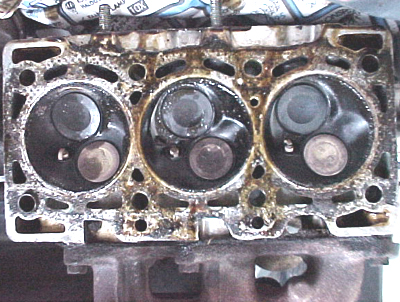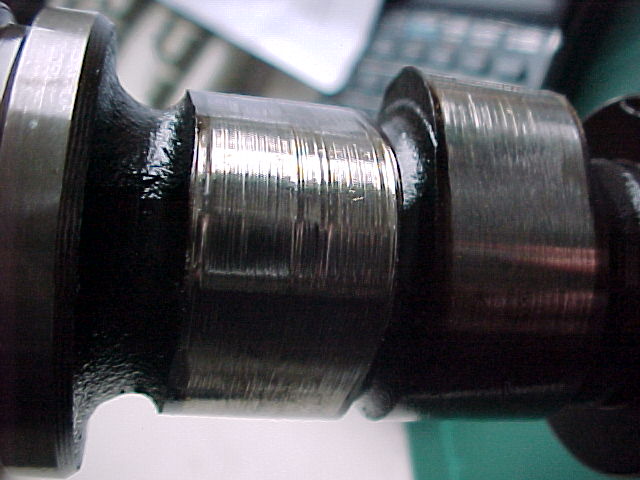![]()
How to tune your Suzuki Alto
For Suzuki Alto 1981-1994, Suzuki Hatch, Maruti Zen or Suzuki Mightyboy models!
Do you want to see this on your speedometer after tuning your Suzuki Alto / Suzuki Hatch?
All the Suzuki Alto's sold in the Netherlands have the same engine/platform. So it is very cheap to maintain, because second hand parts can be found at almost any junkyard and are cheap! The same car and engine are also sold as the Daewoo Tico and in India as the Maruti 800. The F8B engine is also mounted in the Suzuki Mightyboy and Suzuki Hatch.
General specification: Rocker ratio: about 1.48 |
 |
4 speed F8B gearbox gear ratio's:
Gear |
Gear Ratio |
Speed Ratio |
1 |
43/12 |
3,583 |
2 |
39/18 |
2,166 |
3 |
32/24 |
1,333 |
4 |
27/30 |
0,900 |
Reverse |
37/22x22/11 |
3,363 |
Final |
87/20 |
4,350 |
4 speed F5A gearbox gear ratio's:
Gear |
Gear Ratio |
Speed Ratio |
1 |
43/12 |
3,583 |
2 |
39/18 |
2,166 |
3 |
33/24 |
1,375 |
4 |
28/30 |
0,933 |
Reverse |
37/22x22/11 |
3,363 |
Final |
90/17 |
5,294 |
So you don't need a lot of extra horsepower, or a lot less weight, to make driving your Suzuki Alto much more fun!
Tuning your Suzuki Alto consists of increasing the compression ratio, enlarging the intake ports and larger in- and exhaust valves. You can also remove some of the camshaft spline on one end, so you can alter the camshaft timing a few degrees!
By increasing the compression ratio to about 9.5 you will get much(!) better throttle responce, more power and more torque. The downside is that the engine will vibrate slightly more when idling. Even with a compression ratio of 9.5:1 it was impossible to get the engine to "pink" or get it to the point where detonation or pre-ignition occurs. No matter where you put the ignition timing. (Tested on unleaded 95 and BPR6ES spark plugs). Because the head sits lower on the blok, you get different, read retarded, valve timing! Tuning the valvetiming is pretty difficult, I filed one side of the camshaft spline, so you can alter the camshaft timing a few degrees!
General guideline to engine tuning: "The 80% Rule". Which means that the intake port area should be max. 80% of the intake valve area, the exhaust valve area should be about 80% of the intake valve area and the exhaust port area should be 80% of exhaust valve area!
In a lot of engines the 80% is already applied. so you can just use the exhaust valve to check the intake port area. It should be a tight fit. In case of the F8B engine is the exhaust valve area is 76,3% of the intake valve area.
Although I do not have experience swapping the engine with the F8C motor of the Daewoo Matiz, it must be easy to do! The same block with different head, multipoint injection and the alternator on the back of engine. It also comes with a 5 speed gearbox. Puts out 52bhp@6000rpm, and 69Nm@4600rpm. You will get a power to weight ratio of 84pk/1000Kg. Something you will definitely like! Imagine adding a smallish turbo charger to the F8C engine! The new Chevrolet Matiz engine (2005 onwards) has roller rockers and they lower valvetrain friction and valvetrain noise a lot!
| The output curve of the F8C engine. Compared to the stock Suzuki F8B engine it has a 30% increase in power and 17% increase in torque. Almost the whole torque curve is above the original 59Nm! (1800-6200rpm) Click image for better resolution. (This is F8C without roller rockers) | |
 |
This is a pictures of the bottom of a Daewoo Matiz cylinderhead. Stated compression ratio is 9.3:1 Although the picture is not really clear, there are bigger valves mounted; Compare the pictures below. Also, you can still see rough edges near the valves. If you decide to mount an F8C engine, please take the head of and smooth the edges near the valves. The used valves on the F8C engine are 35.6mm and 31.8mm in diameter, but it is not going to be an easy swap, the valve stem size is 5.5mm instead of 6,97mm! Intake area for intake valve is 27% larger and 32.8% larger for exhaust side, exhaust valve area is 79,8% of intake valve area. |
 |
Original valvesizes are: Intake 31.6mm Exhaust 27.6 (valve diameter)
|
If you want to swap valves on the F8B head, you can try the intake valve of a Peugeot TU9 1 liter engine. Intake valve diameter is 34.8mm (21% larger). The valve stem diameter is the same, although the length differs a bit: 109,4 mm original compared to 112.76. The spring retainer is original at 102,1mm but the TU valve is higher at 108,75mm, so you will have to experiment with the spring retainers. You can adjust the longer lenght with the standard rocker adjusters.
If it fits, not tried!, you can also try a bigger exhaust valve of a Peugeot/Citroen TU3 or TU1 series engine. These are 29.4mm in diameter (13% larger), and have the same stem diameter.
You can also look for the valves that are used in the Suzuki G10A engine, the intake is 36mm and exhaust is 30mm. But I doubt if they will fit. (Read: not hit each other when opening). The valvestem diameter is the same, so it is an pretty easy try.
Rocker ratio of the F8B engine is ABOUT 1.48, and 45degrees. Unfortuately I do not have have a picture of the aluminium rockers off the F8C engine nor from the new roller rockers.
Ofcourse you can also look for the F8C Daewoo Matiz valves. A complete F8C engine swap, with gearbox and ECU will cost about 800 euro for an engine with 70k on it.
 |
On the left the retainers that came of my 1985 Suzuki Alto. On the right, also from a Suzuki Alto, but year unknown! |
 |
The spit collets. Look at the difference in notch height. |
 |
On the left the TU3/TU1 exhaust valve. Slightly longer, but not as much as you see on the picture: the TU3 valve itself is slichtly thicker. About 0.5mm. |
 |
|
 |
Result: equal height! You will have to remove about 0.5mm of height on the left because the valve itself is thicker. (and also slightly heavier). The spring pressure will increase a bit which is convenient, because of the weight. |
You can also look for the Manual transmission of a Daewoo Matiz, mountings should be the same, but the gear is cable selected!
The Daewoo Matiz 5 speed F8C gearbox gear ratio's:
Gear |
Speed Ratio |
1 |
3,818 |
2 |
2,210 |
3 |
1,423 |
4 |
1,029 |
5 |
0,837 |
Reverse |
3,583 |
Final |
4,444 |
Related articles:





.jpg)


.jpg)


